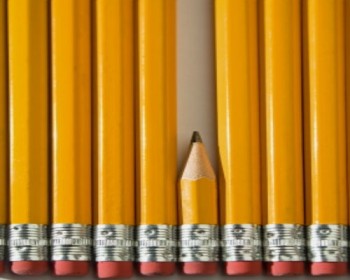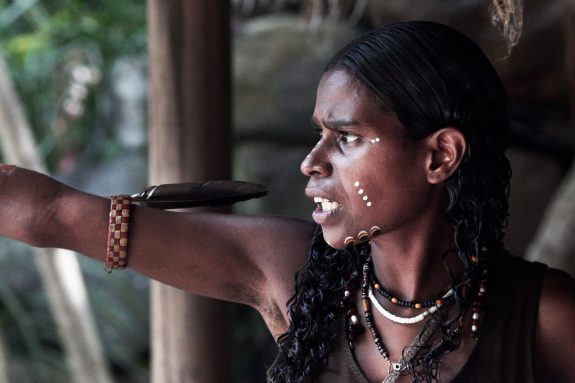Short Term Tony

“You can always amend a big plan, but you can never expand a little one. I don’t believe in little plans. I believe in plans big enough to meet a situation which we can’t possibly foresee now.” (Harry S. Truman).
Whilst there has been much speculation about whether our Prime Minister will become One-Term Tony, another title is already definite. Tony Abbott will most certainly be remembered as Short-Term Tony.
The short-sightedness of the Coalition is seen in their approach to pretty much all of their decisions. Immediate political expediency outweighs the greater good. Priorities have been shifted from safety for our most vulnerable to increased wealth for our richest. Planning beyond the next election is basically non-existent.
Action on climate change is one glaring example of this. As the rest of the world gears up for the inevitable move from fossil fuels, we repeal carbon pricing, approve huge new coal mines, get rid of the profitable Clean Energy Finance Corporation, renege on our Emission Reduction and Renewable Energy targets, and sign Free Trade agreements that will allow foreign corporations to sue us for laws which may affect their profitability. We remove the right of challenge to environmental approvals, and abandon development of renewable energy industries.
As the rest of the world recognises the need for fast, reliable broadband speeds, we are spending billions on a national broadband network that will only deliver those speeds to a very small percentage of the population. This will limit the benefit of the system and have flow on effects in housing and rental prices. We are building infrastructure that barely copes with today’s needs let alone the explosion of future applications this technology will undoubtedly unleash.
To date, Australia has avoided the high unemployment levels seen in other countries, but there are warning signs that it is on the increase. Slashing public service jobs and assistance to manufacturing industries is only serving to exacerbate the problem. Rescinding the instant asset write-off for small business removes one small avenue of assistance for the largest employer in Australia. Scrapping trade training centres will add to the skills shortages that will see more foreigners on 457 visas occupying jobs that our children and unemployed should be training to fill.
Refusal to guarantee funding reform in the education sector beyond four years indicates that the notion of needs-based funding will be scrapped as soon as they feel they can get away with it. The states who signed up late to the deal have already been released from their obligation to co-contribute and to have their funding dependent on assessed progress. Rewriting a curriculum that has just been developed after extensive consultation seems an unnecessary waste of time and money.
Much has been made of Tony’s desire to be the ‘infrastructure Prime Minister building the roads of the 21st century’. Once again, this appears a very short term goal when we should be concentrating on urban and high speed rail as alternatives to road transport. Cars contribute to pollution and congestion in our cities where parking has become a luxury, and the rising price of petrol is an increasing burden on our cost of living. Facilitating more people working from home or using public transport should be a priority.
We have been told that our welfare system is in danger of becoming unsustainable, sparking an overdue review. With our aging population, the old age pension will become an increasing burden but, rather than encouraging low income earners to contribute towards their retirement through superannuation, Tony Abbott canned the co-contribution and the rise in the superannuation guarantee, thus reducing the capacity of the very people who would qualify for the pension to save towards their own retirement. At the same time, he has allowed very wealthy people to use superannuation as a legal way to avoid paying taxation.
Instead of increasing taxation and closing loopholes, Tony announces an amnesty for rich tax cheats so anything they got away with over 4 years ago will be forgiven. The timing of this is baffling as the information and agreements necessary to prosecute these people have just been made available. Since this information-sharing has begun, the Australian Taxation Office has collected $1.7 billion, recouping half-a-billion dollars via these international exchanges just in 2012-13 alone.
Right at the time when mining companies are moving from investment to production phase, when we might see some return on the billions of dollars profit that these companies and individuals make developing resources owned by us, we rescind the mining tax. Contrary to what they would have us believe, mining is a very small employer in the Australian labour market, and the vast majority of their profits go off-shore thus being lost to our economy.
We are being asked to embrace a paid parental leave scheme that is not means tested and will cost billions each year, with women who earn anything over $150,000 a year eligible to receive $75,000 to stay at home with their baby for 6 months. At the same time we see wage rises to childcare and aged care workers rescinded and, in perhaps the cruellest move yet, the government wants the most vulnerable workers in the Australian economy – intellectually disabled employees in managed workshops – to waive their legal rights to a wage claim in return for a one-off payment of backpay. These workers, who are pressured to sign away their legal rights, are currently paid around $1.77 an hour.
By hiding the boats and infringing on Indonesia’s sovereignty, we are being asked to believe that we are successfully addressing the asylum seeker problem. By illegally incarcerating innocent people in dreadful conditions in off-shore detention camps, we are being told we are fulfilling our obligations to the Refugee Convention. By cutting foreign aid and ignoring human rights abuses, we are contributing to the reasons people flee thus adding to the huge numbers of refugees worldwide.
The promise of a surplus has receded to the unforeseeable future amidst cries of Labor mismanagement and crippling debt, though it is hard to take these cries seriously when one of Mr Hockey’s first actions was to give the Reserve Bank $8.8 billion they had not asked for nor expected. We shall see if the rumours of a short term gamble on the exchange rate are true if Mr Hockey attempts to withdraw dividends just prior to the next election.
We have seen the disbanding of advisory groups on climate change, preventative health, positive aging, and crime prevention. Instead we are paying polluters, charging for doctors, cutting aged care wages and superannuation, and locking up people who have committed no crime.
Rather than being a visionary government, we have been saddled with a myopic group whose overriding goal is re-election on the back of big business and billionaires, paid for by our poorest and most vulnerable. Tony’s short-term decision-making is, I fear, going to have very real long-term consequences, and none of them are good.










